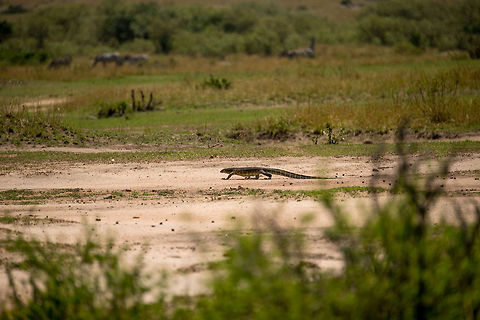
Appearance
Nile monitors can grow to about 120 to 160 cm in length, with the largest specimens attaining 244 cm . In an average-sized specimen, the snout-to-vent length will be around 50 cm . In body mass, adults have been reported to vary widely, one study claiming only 0.8 to 1.7 kg , others state weights ranging from 5.9 to 15 kg in big monitors. Variations may be due to age or environmental conditions. Exceptionally large specimens may scale as much as 20 kg , but this species weighs somewhat less on average than the bulkier ''Varanus albigularis'', the only other African lizard to rival the Nile monitor in size. They have muscular bodies, strong legs, and powerful jaws. Their teeth are sharp and pointed in juvenile animals and become blunt and peg-like in adults. They also possess sharp claws used for climbing, digging, defense, or tearing at their prey. Like all monitors, they have forked tongues, with highly developed olfactory properties. The Nile monitor has quite striking, but variable, skin patterns, as they are greyish-brown above with greenish-yellow barring on the tail and large, greenish-yellow rosette-like spots on their backs with a blackish tiny spot in the middle. Their throats and undersides are an ochre-yellow to yellow-cream with some faint barring often on their throats.Their nostrils are placed high on their snouts, indicating these animals are highly aquatic. They are also excellent climbers and quick runners on land. Nile monitors feed on fish, snails, frogs, crocodile eggs and young, snakes, birds, small mammals, large insects, and carrion.
References:
Some text fragments are auto parsed from Wikipedia.